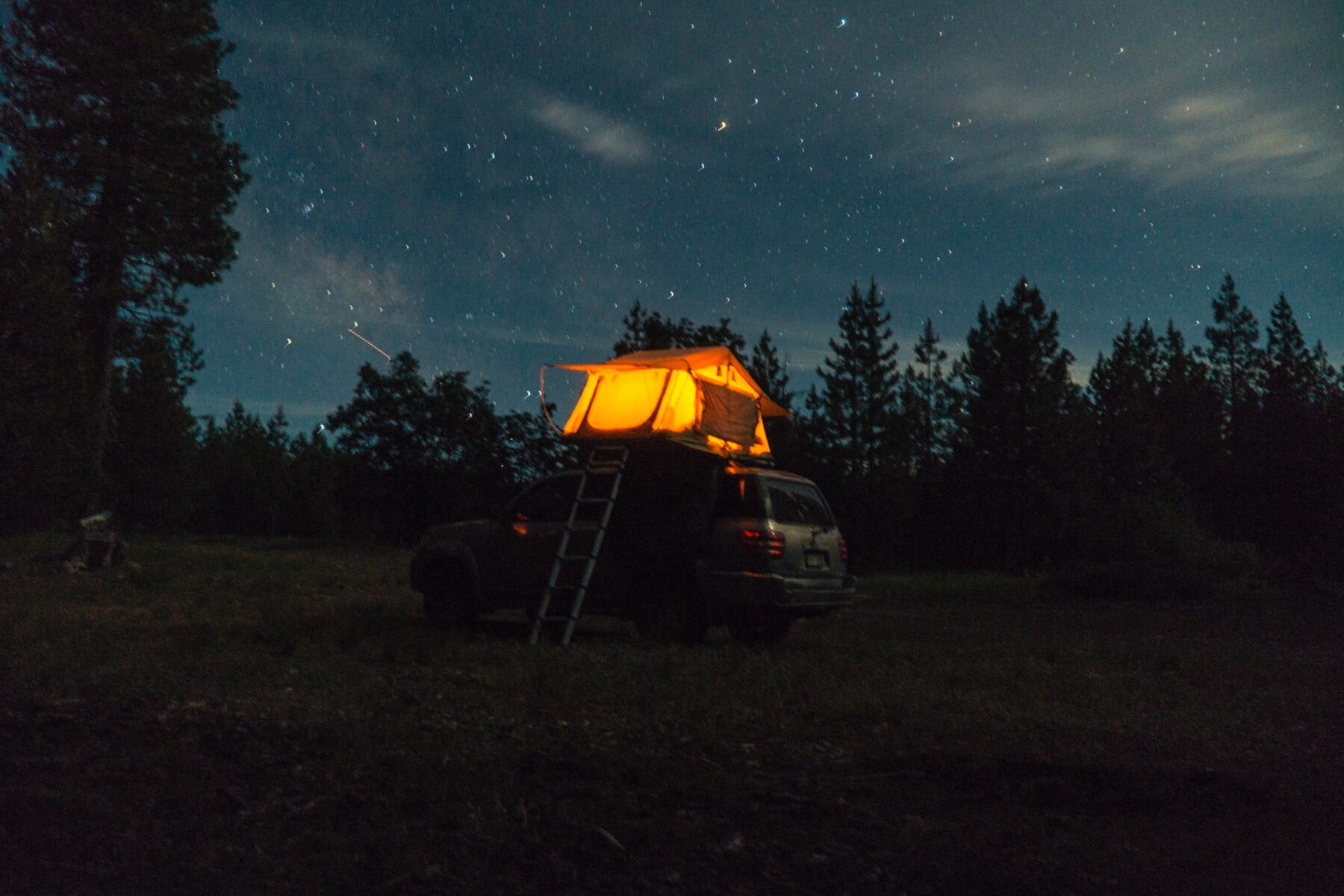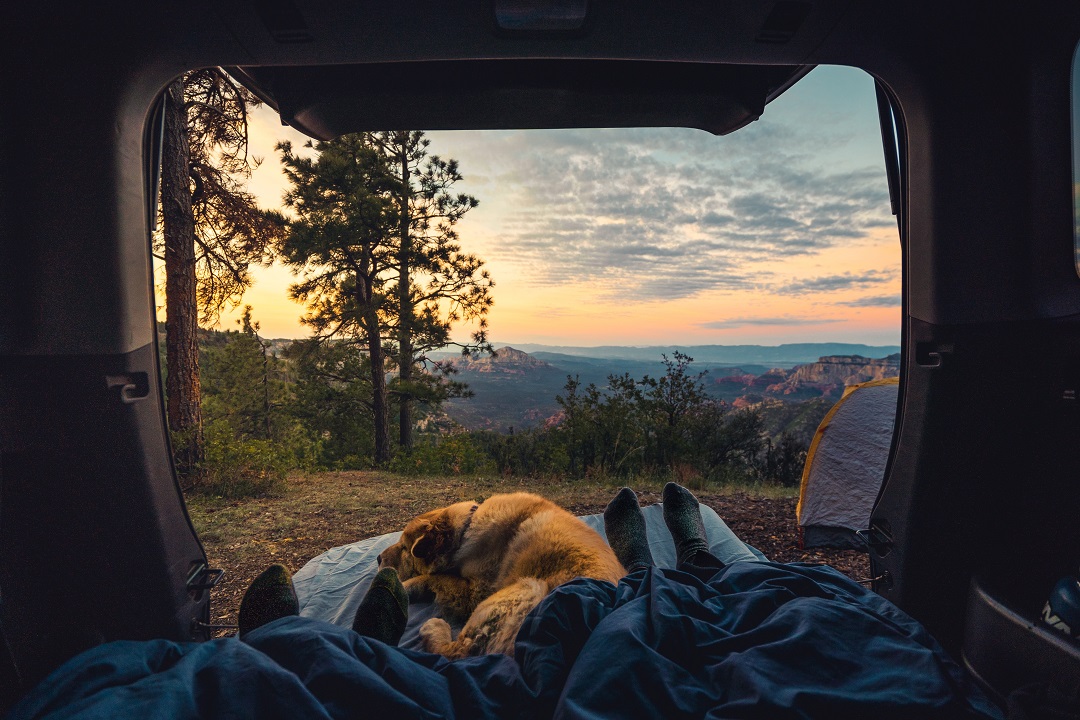Amid the ongoing pandemic, many people want to get outdoors. But not everyone likes bedding down with just a sleeping bag between their backsides and the ground.
Fortunately, modern campers have an option that provides the invigoration of fresh air and the excitement of new places, but without the (literal) pain in the back — car camping.
Like traditional camping, car camping can take many forms.
“Car camping is a versatile term that’s used to describe several different types of camping,” said Laura Newcomer, a consultant for Columbia, Missouri-based Say Insurance and an avid outdoor writer and adventurer. “Even if you’re not eager to lay out under the stars, you can enjoy the perks of camping so long as you have access to a vehicle.”
The most basic form of car camping, of course, is driving to a campsite and sleeping in the vehicle that brung ya, whether you sleep half in the trunk with the back seats folded down, or with the front seats laid back. Either way, crack a few windows for ventilation, make sure the parking brake is set, and you’re golden!
But beyond that, multiple “hybrid” options are available, such as:
- Pitching a tent alongside your car. That way, you can sleep in the car and have a handy place for storage and all your other camping needs.
- Mounting a rooftop tent on your vehicle. After climbing up a ladder to your tent, you’re free to sleep while the nighttime critters are free to do their creepy-crawly things below.
- Attaching a tent to your vehicle. “Car extension” tents attach to your SUV, minivan, or hatchback, a “best of both worlds” option.
- Pitching a tent in your truck bed. Just remember some padding or an air mattress to protect you from all those grooves and the rainwater that can flow through them!
- Purchase an awning. Rooftop tents and car-extension tents range from about $150 to more than $4,000. A less costly option is an awning for shade and (some) weather protection.
Car Camping Tips
Generally, you can car camp anyplace you can camp in a traditional tent, but be sure to call ahead to see if you need a permit or cash for fees. Aside from that, Newcomer provides some additional car-camping tips:
- Set that parking brake. This tip can’t be overemphasized. You don’t want to wake up against a tree, at someone else’s campsite, or — even worse — in a lake or on a road.
- Crack some windows. Even on really cold nights, you still need to breathe. Besides, aren’t you there for fresh air? Crack a few windows and rely on blankets for car-camping comfort.
- Lock your doors. You’ve seen horror movies, right?
- Make sure your head is above your feet. A slight incline will prevent your blood from literally going to your head.
- Control your climate. You don’t want your car running all night for heat or air conditioning, so prepare for overnight weather. When it’s cold, bring extra clothes and blankets for layering. When it’s hot, take a portable fan and ice packs. Window shades can also help in either condition, for both temperature control and privacy.
In addition to these tips, don’t be fooled into thinking you won’t need a lot of the same gear you’d want when camping in a tent. Coolers, light sources (don’t count on headlights!), a first-aid kit, potable water, device chargers, and a camp stove or matches all have their place when car camping.

Car camping can take many forms, such as rooftop tents. (Jordan Heinrichs)
Where to Car Camp
Now that you know the rules of the off-road, the next question is, “Where can I boondock in Missouri and Illinois?” Here are some great options:
Missouri State Parks
- Meramec. More than 24 caves, from rustic to the well-developed Fisher Cave, accompany 208 campsites. Amenities range from full-service (electric, water, sewer) to basic sites without hookups.
- Johnson’s Shut-Ins. Cool off in dozens of natural swimming holes after a hike in the woods, then relax in campsites with varying levels of services. Forget something? No problem — a camp store is on site.
- Sam A. Baker. The largest car-camping destination in Missouri, Sam A. Baker offers access to the state’s longest trail, the Ozark Trail, which runs for a staggering 350 miles. Plus, Johnson’s Shut-Ins is nearby, and camping sites range from no hookup to electricity-only.
- Roaring River. The angler’s car-camping choice, Roaring River is a trout fisherman’s paradise. Non-fishing folk will enjoy opportunities for swimming and hiking, with primitive or electricity-only sites available.
Illinois Parks
- Horseshoe Lake. With rustic campsites open from May 1 to September 30, this nearly 3,000-acre state park is rich in history. Cahokia Mounds is nearby, and Horseshoe Lake itself features an earthen platform mound from the people who inhabited this part of Illinois for millennia. (Note: the Cahokia Mounds Interpretive Center is closed for renovation, but you can still climb the massive Monks Mound.)
- Ferne Clyffe. Named for its impressive rock formations and abundant ferns, Ferne Clyffe is a Jackson County park that spans more than 2,400 acres. But look out for horses! Ferne Cliffe features an equestrian camp as well as human camps, all of which boast toilets and other amenities.
- Dixon Springs. You might want to visit this Shawnee National Forest park after a good rainstorm. Because of their unique topography, the park’s many hills sprout small rivers and waterfalls when rains fall. The trailer camp features electricity, and more rustic sites are also available.
- Wayne Fitzgerrell. Located near the intersection of Interstates 64 and 57, Wayne Fitzgerrell is easily accessible by vehicle. Pull off the highway and into this park on Rend Lake to enjoy more than 240 modern campsites or 17 rustic sites for more of a prairie experience.
Author: Tim Fox is a contributor to Terrain Magazine.


Leave A Comment